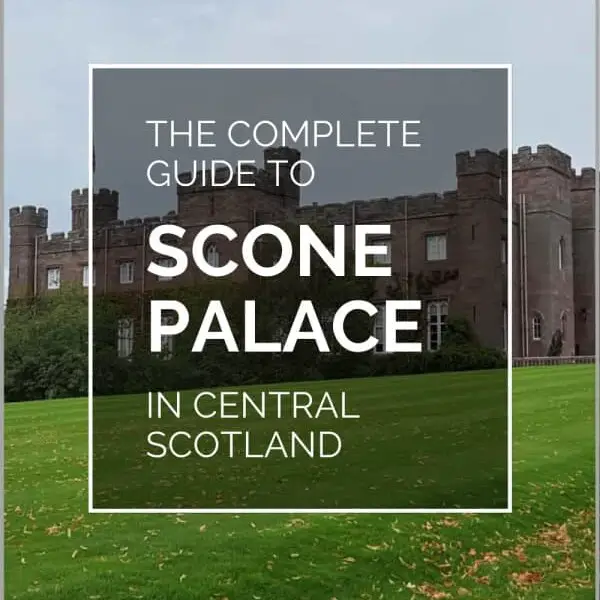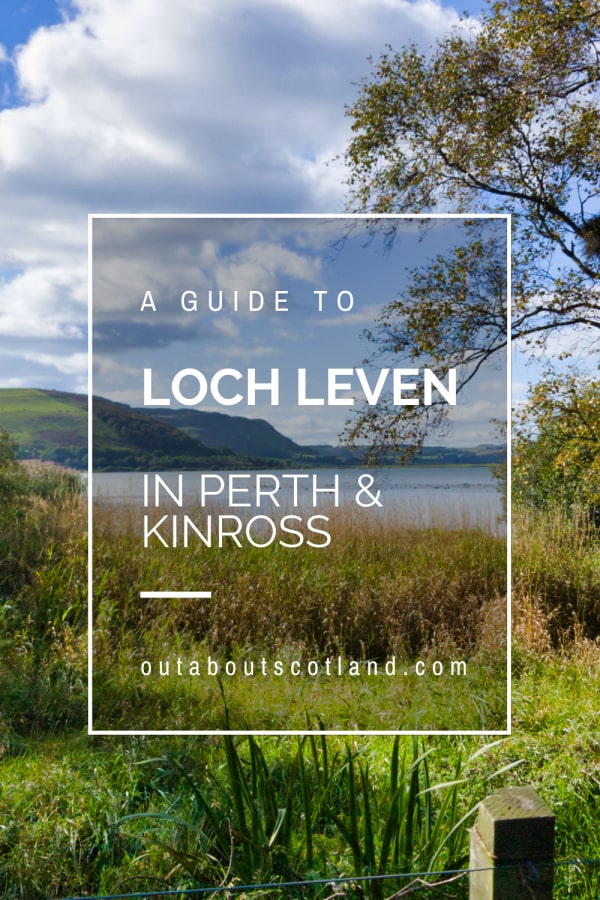This red sandstone palace is located in the village of Scone just outside of Perth in the region of Perth & Kinross. As the original crowning site for the ancient kings of Scotland, Scone Palace is one of the most significant historic buildings in the country. Visitors can explore both the palace and the extensive grounds on self-guided tours as well as enjoy a variety of organized events throughout the year.
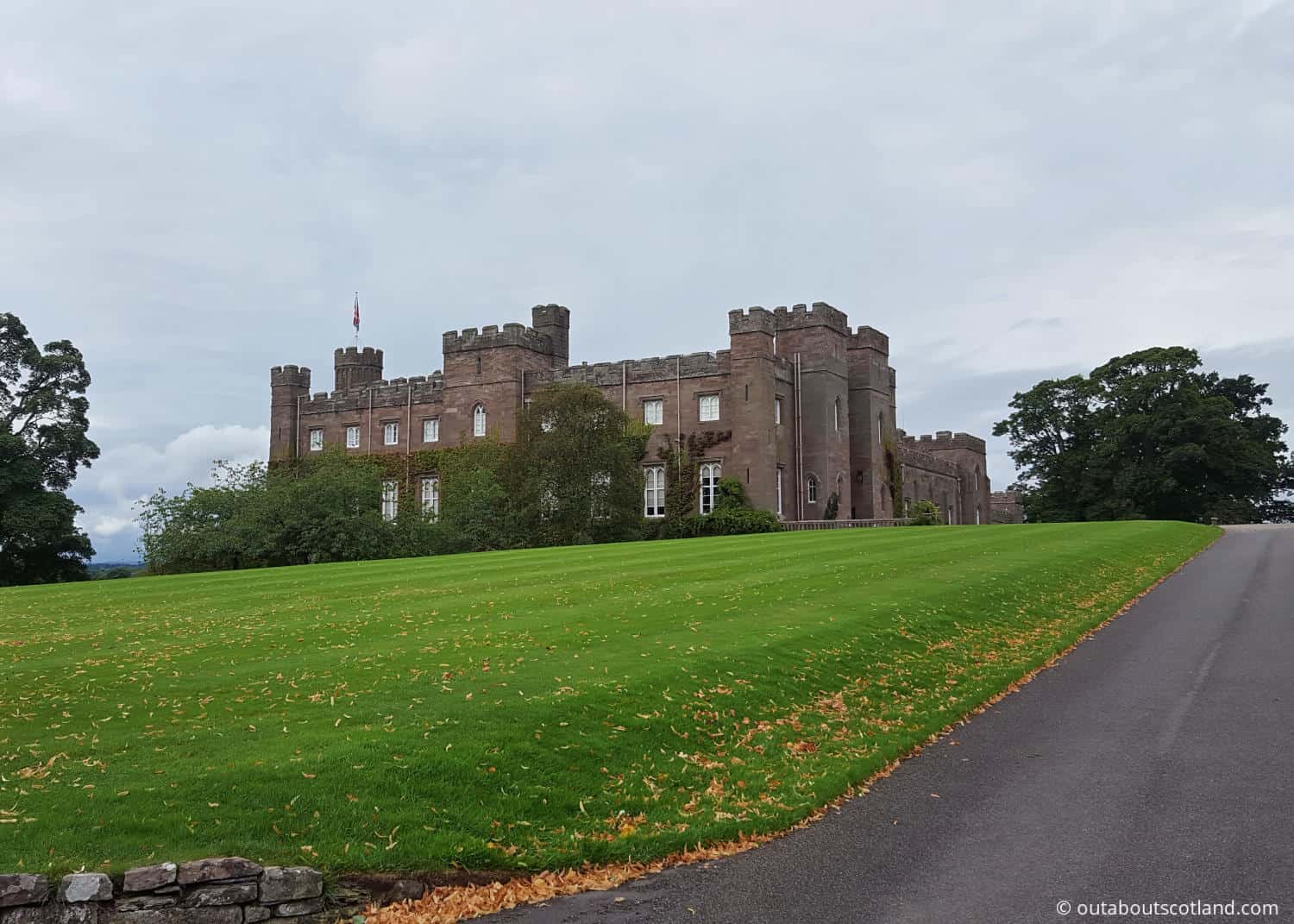
| Address: | Perth, PH2 6BD |
| Opening Hours: | Monday to Sunday 09.30 am to 5 pm |
| Admission Price: | Palace and Gardens Adult £16.50 Child £12 Family £50 |
| Parking: | Free car park on-site |
| Contact: | 01738 552300 help@scone-palace.co.uk |
| Facilities: | Gift shop, cafe, toilets, disabled access (manual wheelchairs only in the palace), picnic area |
Overview

Scone Palace, located near the city of Perth in Scotland, is the historic crowning site of Scottish kings which is now open to the public as a top-rated tourist attraction. This Gothic-style building, set amidst sprawling gardens and forests, houses significant antique collections as well as the famous Stone of Destiny, making it a must-visit spot for history aficionados and sightseers alike.
Scone Palace is widely recognised as one of the top tourist attractions in Central Scotland. Known as the ‘Crowning Place of Kings’, the palace is popular both for its historical links (it was the original home of the Stone of Scone) and its grounds which extend across 100 acres of immaculately manicured lawns and fir tree woodlands.
Scone Palace is located near Perth at the edge of Perthshire’s Big Tree Country which means it’s a perfect complement to a walk through one of the ancient woodlands that are so prevalent in this part of Scotland. But to be honest, the grounds at Scone are so nice you probably won’t feel the need to leave the site to experience Perthshire’s wonderful forests.
The nearby city of Perth is rarely advertised as a tourist destination yet it offers lots of activities in the city centre as well as heaps of things to do in the immediate area – with Scone Palace topping the list.
This red sandstone palace is arguably one of the most important historic sites in Scotland because it’s the location where 38 kings of Scotland were crowned on the Stone of Scone – otherwise known as the Stone of Destiny.
The stone is an ancient block of red sandstone that was used for many centuries in Scottish coronations until it was forcefully taken to England in 1296. However, it was returned to Scotland in 1996 where it now sits alongside the Scottish Regalia at Edinburgh Castle.
Famous kings including Robert the Bruce were crowned on the stone, and although the original is in Edinburgh, visitors can at least sit on a replica outside the Scone Palace chapel.
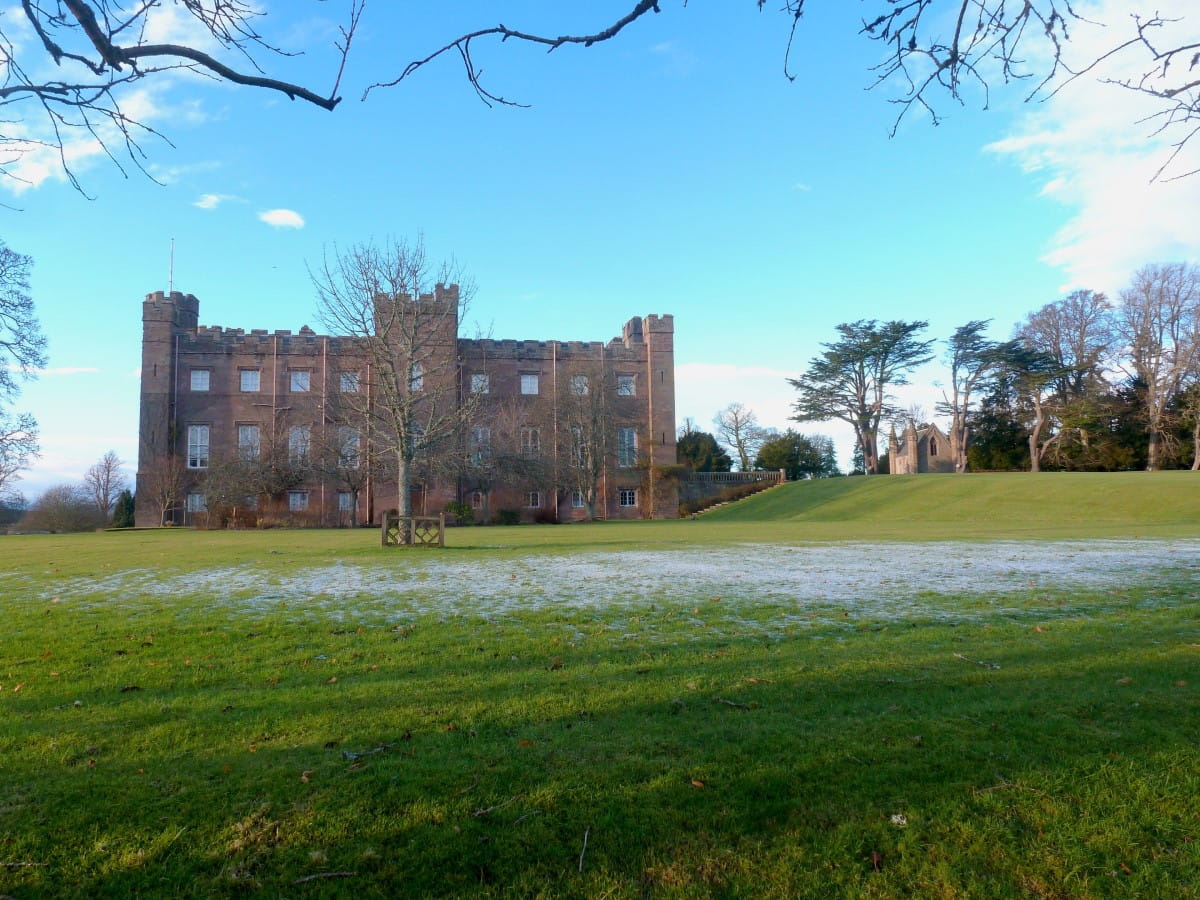
The Highlights
1: Scone Palace has a fascinating history dating back over 1,000 years. It was once the site of the coronation of Scottish kings, including Macbeth and Robert the Bruce, and exploring the palace allows you to immerse yourself in Scotland’s royal heritage and learn about its role in the country’s history.
2: The café and shop are superb. I particularly like the fact you can buy birdseed to feed the peacocks while you’re having your lunch in the outside seating area.
3: Scone Palace boasts an impressive collection of art and antiques including paintings, sculptures, furniture, and tapestries. The collection provides a rare glimpse into the lavish lifestyle of the palace’s former inhabitants.
Visiting Tips
1: If you’re a visitor to this part of Scotland and you’re looking for accommodation, I highly recommend checking out the Crieff Hydro which is located 19 miles away on the A85. This hotel resort features restaurants, swimming pools and health treatments, and the rooms are spotlessly clean.
2: Scone Palace always seems to be holding an event of some kind so check their website regularly as there’s bound to be something that’ll interest you.
3: The season ticket is by far the best value if you think you’ll make a return visit as it gives you unlimited entry from March to October.
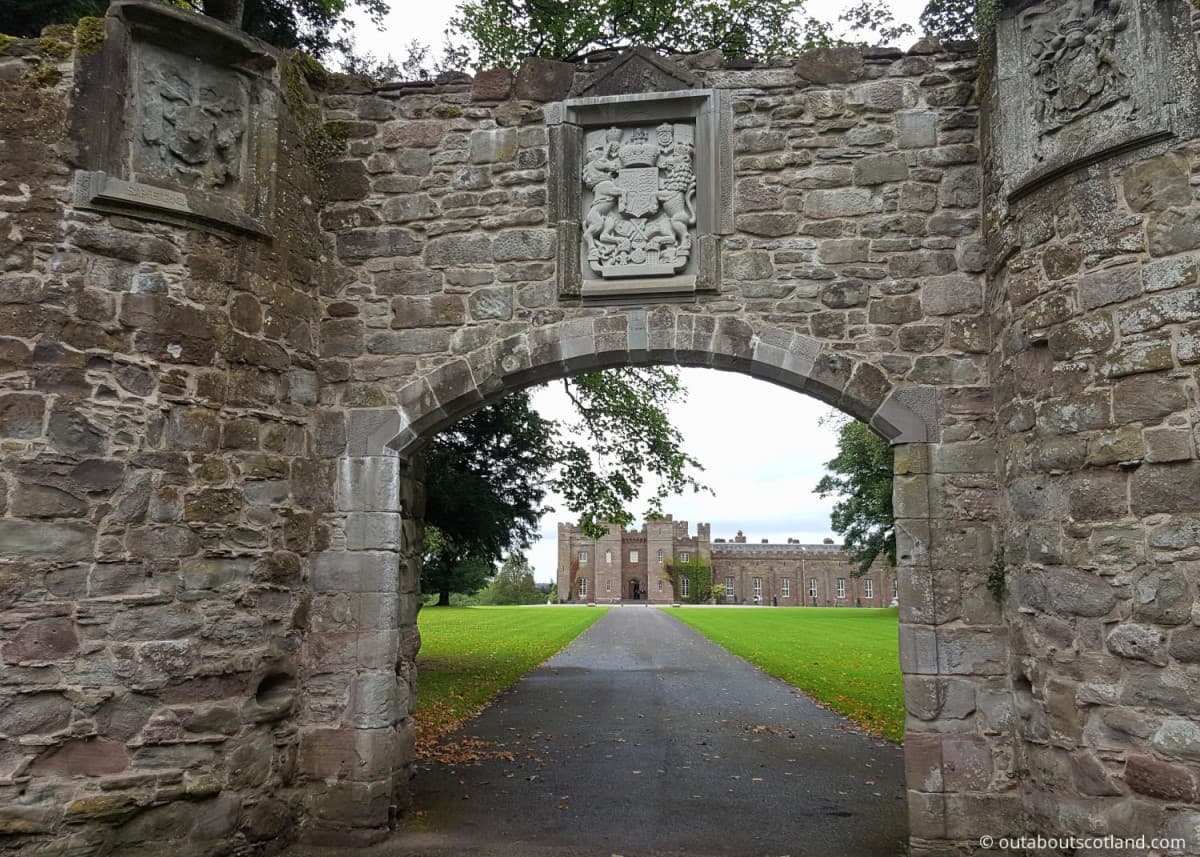
Tourist Information
Visitors to this attraction can explore the palace – which is packed to the rafters with furniture, paintings, and family heirlooms of the Earls of Mansfield (the 8th Earl is the current owner) – either on a self-guided tour or an expert-led guided tour.
The tours allocate a single guide to your group for the duration of your visit, but it’s much cheaper – and in my opinion more relaxing – to just wander around the building on your own. However, if you want an expert to tell you the history of the palace then a guided tour is worth considering.
The palace itself is beautifully maintained and has a vast labyrinth of rooms and corridors, each with collections of ancient Scottish artefacts and priceless artworks. Walking through the corridors can be a wee bit overwhelming but there are lots of knowledgeable guides who’ll be only too happy to give you a rundown of the palace’s history.
After a busy hour or two wandering through the rooms and corridors you can relax in the café which has additional seating in the gardens. Be aware, though, that you’ll probably have a peacock rummaging around your feet for scraps of food. If you want to keep your picnic for yourself you can buy some bird feed in the on-site shop to distract them.
The gardens are stunning and there are large areas of woodland to explore as well as an enormous maze and some immense flower beds to walk around. In fact, the gardens are so big you could easily spend most of the day just walking around them without even entering the palace.
Another reason to visit Scone Palace is to experience the events that are held there, and you can pretty much guarantee you’ll find something happening no matter the time of year you visit. The event organisers offer something for all interests throughout the year and you’ll find everything from falconry displays and pottery exhibitions to live music and craft workshops. If you’d like to know more, check out the official events page.

History
There are no records of Scone before 906AD although many historians believe the original site could date back to pre-Roman times. However, it’s known that during the time of the early medieval period, Scone was at the heart of the Pictish kingdom.
The palace was probably built at this location due to an abbey that had been founded on the site, though nothing remains of it today. Although the abbey flourished for over four hundred years it was destroyed during the Scottish Reformation in 1559.
Scone was used as the home of the Scottish Parliament for several hundred years and the palace was also home to a succession of Scottish kings who were coronated on Moot Hill.
Moot Hill was supposedly created by noblemen from across Scotland who would travel to Scone with soil from their homeland carried in the bottom of their boots. Once at the mound, the soil would be deposited so the inaugurated king could say that he’d been crowned by standing symbolically on all the lands in Scotland.
These coronations continued until the last coronation in Scotland took place in 1651 when King Charles II was crowned King of Scots. Thereafter, the palace was managed by the Murray family whose roots stretch back to 1776 when William Murray was declared the 1st Earl of Mansfield. However, it wasn’t until the beginning of the 19th century that the 3rd Earl of Mansfield began substantial works to renovate the original buildings into the beautiful palace that we see today.
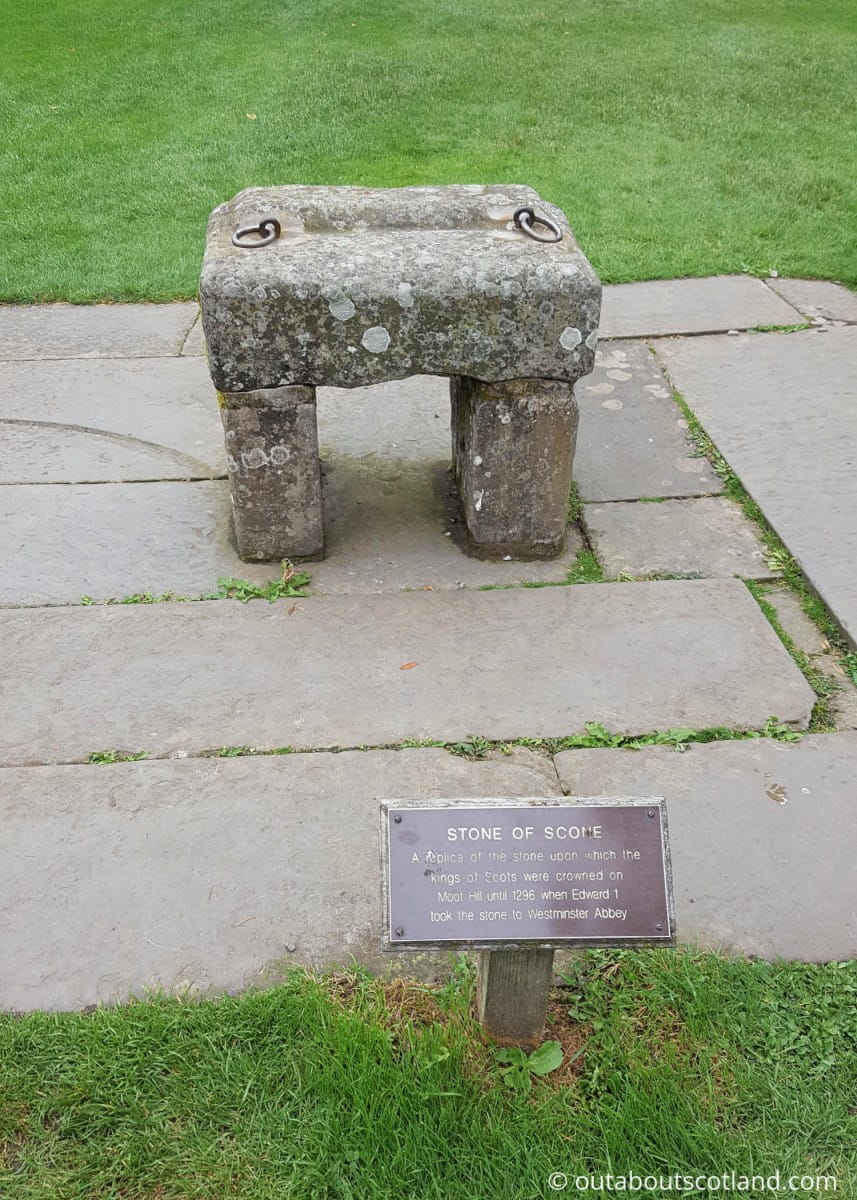
Things to Do
Historical Exploration: Scone Palace is a place of great historical significance. Follow in the footsteps of Scotland’s nobility and explore the crowning place of forty-two Scottish Kings. The Stone of Destiny, used in coronation ceremonies for centuries, is a must-see (although it’s actually a replica as the original is safely stored in Edinburgh Castle).
Antique Admiration: Inside the palace, you’ll find an extensive collection of antiques, paintings and rare artefacts. Discover the story behind each piece as you roam the grand rooms and halls. The palace’s guides are on hand to share fascinating stories and insights about the collection.
Garden Strolls: The palace is surrounded by magnificent gardens and grounds. The peaceful trails cross through 100 acres of woodland gardens that are bordered by flowering shrubs and rare conifers. Don’t miss the unique design of the Murray Star Maze – a living puzzle made from 2,000 beech trees.
Wildlife Watching: Scone Palace offers a unique opportunity to observe wildlife in their natural habitat. The estate is home to a variety of species including red squirrels, roe deer, and an array of butterflies in the butterfly garden.
Culinary Delights: After a busy day exploring Scone Palace, relax and refuel at the on-site coffee shop. Enjoy traditional Scottish treats like shortbread and scones, or a hearty lunch made with locally sourced ingredients. Just be aware that if you take your food outside you’ll be pestered by inquisitive peacocks who’ll want to know exactly what you’re eating!
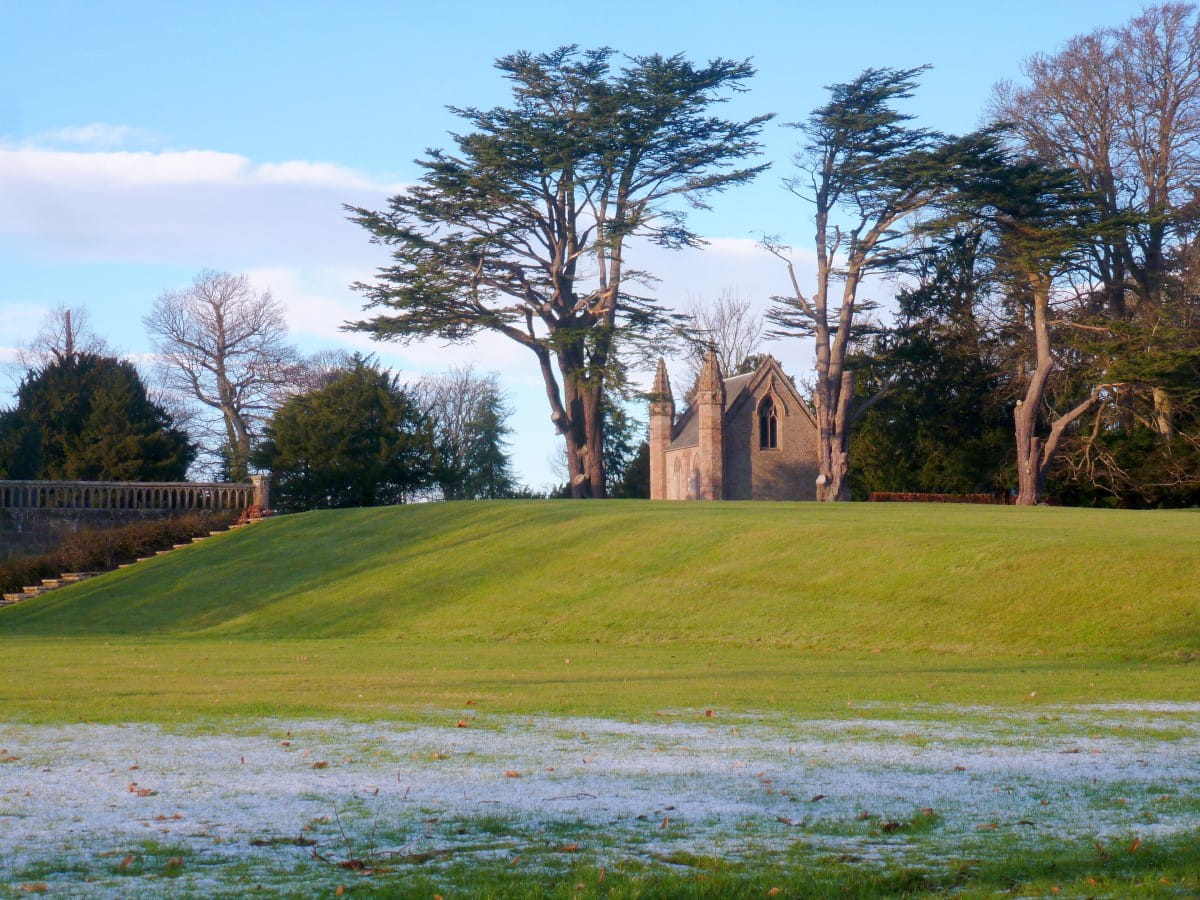
Things to Do Nearby
Stanley Mills. Stanley, Perth PH1 4QE. 24-minute drive.
A 200-year-old preserved textile mill that features interactive displays that tell the stories of the mill workers and how the mill was powered by the River Tay. Visitors can also explore Stanley village which was purpose-built to house the mill workers.
Huntingtower Castle. Perth PH1 3JL. 16-minute drive.
A grand tower house built in the 1400s for the Ruthven family. Managed by Historic Environment Scotland. Self-guided tours are possible inside the castle. There are picnic benches in the grounds.
Perth Museum and Art Gallery. 78 George St, Perth PH1 5LB. 8-minute drive.
A small but excellent museum that showcases a wide array of exhibits and artefacts that explain the history of Perth and the surrounding area. Entry is free.
Kinnoull Hill Woodland Park. Corsie Hill Rd, Perth PH2 7BZ. 9-minute drive.
A large hillside park near Perth that offers woodland walks through a managed arboretum and up the 222-metre Kinnoull Hill. There are a number of wildlife sculptures throughout the park.
The Black Watch Castle and Museum. Perth PH1 5HR. 9-minute drive.
A 5-star museum dedicated to Scotland’s most famous regiment, the Black Watch. The museum is situated inside the 17th-century Balhousie Castle and it has self-guided and guided tours.
Frequently Asked Questions
Does anyone live in Scone Palace?
Scone Palace has been the family home of the Earls of Mansfield for over 400 years. The current owner is the 9th Earl of Mansfield, Alexander David Mungo.
What was old Scone known for?
Scone’s use as the coronation site of Scotland’s monarchs led to it becoming the effective capital of Scotland in the Middle Ages.
During that time it served as the main residence for Scottish royalty as well as a meeting place for parliament.
Why is Scone Palace famous?
Scone Palace (or more specifically, Moot Hill) is famous for being the location of the Stone of Scone (also known as the Stone of Destiny).
The stone is a block of red sandstone that was used for centuries in the coronation of Scotland’s monarchs. It was taken to England in 1296 by King Edward I but was returned to Scotland 700 years later in 1996.
Can you stay in Scone Palace?
It is possible to stay in Scone Palace. A number of rooms have been opened for overnight visitors in The Balvaird Wing and The West Passage. See the official Scone Palace website for details.
How do I get to Scone Palace?
From Dundee, Edinburgh or Glasgow, follow the signs for the ‘A93 Braemar’. Scone Palace is situated two miles north of Perth on the A93.

